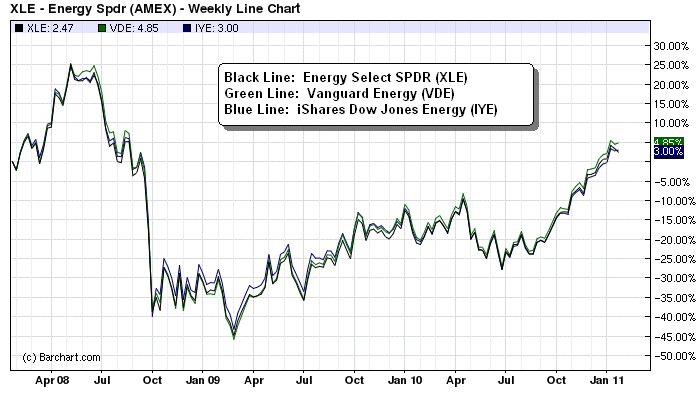Three Energy ETF Alternatives To XLE
Post on: 16 Март, 2015 No Comment

Three Energy ETF Alternatives To XLE
Details
Page 1 of 2
Bigger isn’t always better. Which three smaller energy plays have caught investors’ attention now?
Bigger isn’t necessarily better, as our most recent Commodity ETF Flows report shows. (For those who haven’t seen our new feature yet, each Friday we examine how much capital is entering and exiting commodity-related exchange-traded products over the course of the week.)
Last Friday’s report revealed a curious phenomenon: Investors have grown leery of energy ETFs, pulling out more than $1.3 billion in assets last week alone, even as they snatched up less traditional energy plays.
It’s as if investors can’t make up their minds whether they love energy—or hate it.
Last week, investors pulled a whopping $1.4 billion from the sector’s behemoth Energy Select SPDR ETF (NYSE Arca: XLE). This fund, which tracks a portfolio of 41 drilling and energy-service petroleum companies, accounts for almost a quarter of the total assets for all energy-related ETPs. It’s up almost 12 percent year-to-date.
At the same time, investors directed new capital into several smaller energy products. Indeed, the five ETPs that received the most inflows in the period were all energy-related.
Mixed Message?
Let’s take a look at each fund in turn. XLE holds all of the energy components of the S&P 500 and is market cap weighted. It’s unsurprising then that the ETF is biased heavily toward massive integrated oil companies, such as Exxon Mobil, Chevron and the like. In fact, those two companies alone represent 31 percent of the fund.
In contrast, the fund that garnered the most investor capital last week, the SPDR S&P Oil & Gas Exploration & Production ETF (NYSE Arca: XOP), is equal weighted. Integrated oil companies only represent 10 percent of its holdings. Much smaller oil and gas exploration and production companies such as Chesapeake Energy, SandRidge Energy and a host of others account for 77 percent of the fund. Thus, XOP offers a more diversified portfolio and higher exposure to smaller companies than XLE.
A competitor to XOP, the iShares Dow Jones U.S. Oil & Gas Exploration & Production Index ETF (NYSE Arca: IEO), attracted the second-highest amount of investor inflows last week—$45 million to XOP’s $98 million. But while the two ETFs offer the same basic theme—petroleum E&P companies—several differences separate the funds.
First, IEO allocates almost 100 percent of its assets to oil and gas exploration and production companies; in other words, it does not invest in integrated oil companies at all. It is also market cap weighted, meaning it has substantial positions in Occidental Petroleum, Apache Corporation and others. IEO’s top 10 holdings account for 61 percent of the fund vs. 16 percent for XOP.














